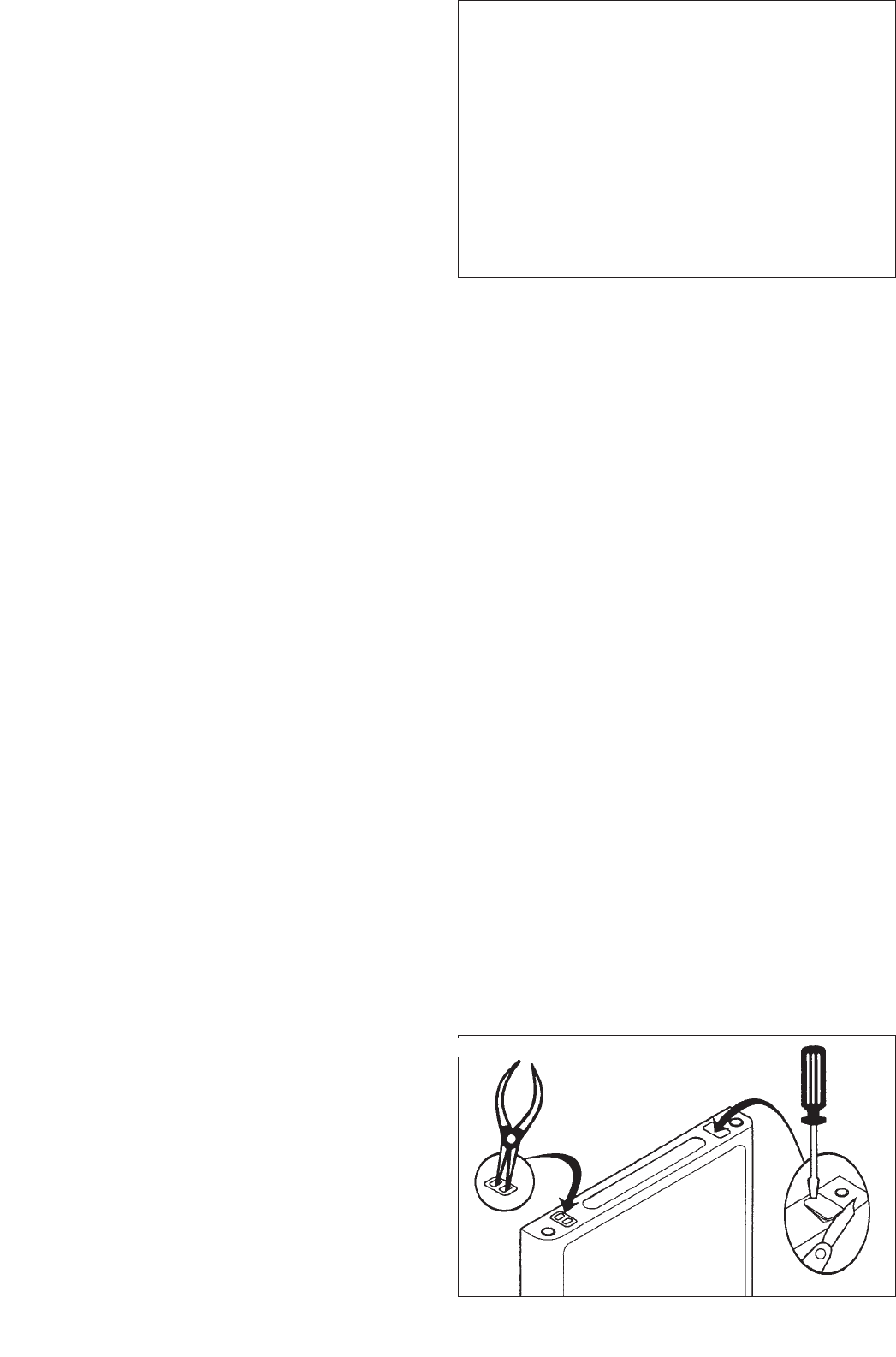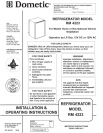
9. TESTING LP GAS SAFETY
SHUTOFF
The gas safety shutoff must be tested after the refrigera-
tor is connected to LP gas supply.
To test the gas safety shutoff, proceed as follows:
A. Start the refrigerator according to the instructions for
LP Gas Operation. See "Section C. Operation
Instructions."
B. Check that the gas flame is lit. Allow it to burn a few
minutes to ensure a full, stable flame.
C. Turn the gas safety valve (D, FIG. 8) to the "OFF"
position. Within 1-2 minutes the gas safety device
within the valve should automatically close. An
audible "click" from the valve may be heard.
D. Turn the gas safety valve to the "ON" position
(D, FIG. 8).
E. Without pushing in the knob (D, FIG. 8) of the gas
safety device, apply a commercial leak detection
solution to the burner jet. No bubbles should appear.
Bubbles indicate a gas leak and the safety valve must
be replaced by a qualified serviceman.
F. Rinse the burner jet with water. Light the burner and
allow it to burn for five minutes.
10. 120 VOLT AC ELECTRICAL
CONNECTION
The refrigerator is equipped with a three-prong (groun-
ded) plug for protection against shock hazards, and
should be plugged directly into a properly grounded
three-prong receptacle. DO NOT cut or remove the gro-
unding prong from this plug. The power cord should be
routed to avoid direct contact with the burner cover, fuel
cover or manual gas shutoff valve knob.
11. 12 VOLT DC CONNECTION
The 125 watt heating element operates the cooling unit
when the refrigerator is connected to the battery of the
vehicle. It has a current rating of about 10.5 amps; there-
fore, the wiring from the battery to the refrigerator must
be of heavy enough gauge to carry this load satisfactori-
ly without undue voltage drop. To ensure this, the mini-
mum size of wire to be used is 14 A.W.G. The terminal
block for connecting the 12V supply cable to the battery
is positioned at the lower lefthand corner of the rear side
(G, FIG. 8). From this terminal, the connection to the
battery should be made using ring-type clamps with
tightening bolts to ensure good contact with the battery
terminals. Polarity is not important, therefore it does not
matter which wire leads to which battery terminal.
DO NOT connect lights or any other electrical com-
ponents to the same circuit that is used by the refri-
gerator.
FUSE
A 12 amp (continuous rating) fuse should be incorpora-
ted in the wiring of the DC supply, as near to the battery
as possible. The fuse must be in the side of the wiring
which is not connected to the chassis. For example, if
the vehicle has a negative ground, the fuse must be in
the positive side of the wiring.
12. CHANGING DOOR HINGES
FROM ONE SIDE TO THE OTHER
If required, the door hinges can be moved to the opposi-
te side. Reverse the door hang in the following way:
A. Unscrew the upper hinge pin, taking care not to lose
the set of washers and bushings.
B. Lift the door from the lower hinge pin. If decorative
door panel is to be installed, proceed to Step 13.
C. Unscrew the pin and mount it on the opposite side
hinge.
D. Unscrew the travel catch and mount it on the
opposite side.
E. Change the cover plate and travel lock plate in top of
door frame to opposite side. Use a screwdriver to
press down on one edge of the cover plate. The
opposite edge will rise above the frame. Use a knife
blade under the raised edge to pop it out. See FIG. 7.
Use needle-nosed pliers to carefully lift lock plate out
of door frame. See FIG. 7.
F. Replace door on lower hinge pin. Replace upper
hinge pin and bushings removed in Step A.
G. Check that the door closes properly and seals all
around.
6
IMPORTANT:
To prevent the refrigerator from being left on and
draining the battery when the vehicle's engine is not
running and charging the battery, it is recommended
that an automatic cutout relay be installed between
the battery and the refrigerator toggle switch so that
the refrigerator will not draw current when the
vehicle ignition is switched off. Alternatively, a suita-
ble plug and receptacle should be installed in the
12V supply line so that the refrigerator can be dis-
connected from the supply, as necessary.
FIG. 7














